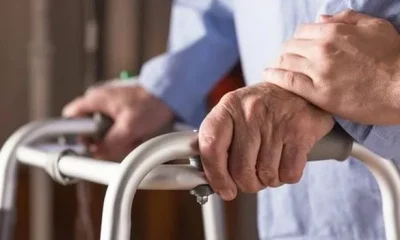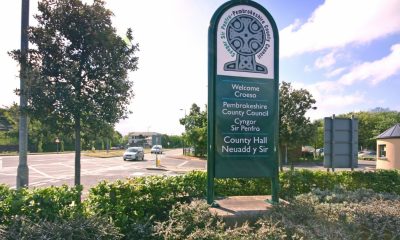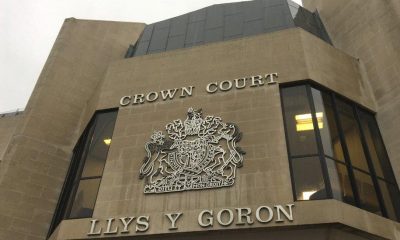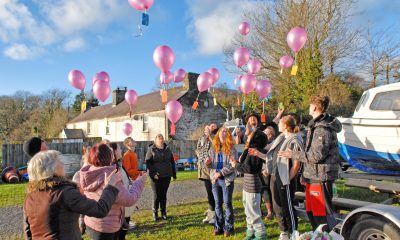Charity
Fishguard RNLI celebrates first female Coxswain in Wales, as charity marks 200th year
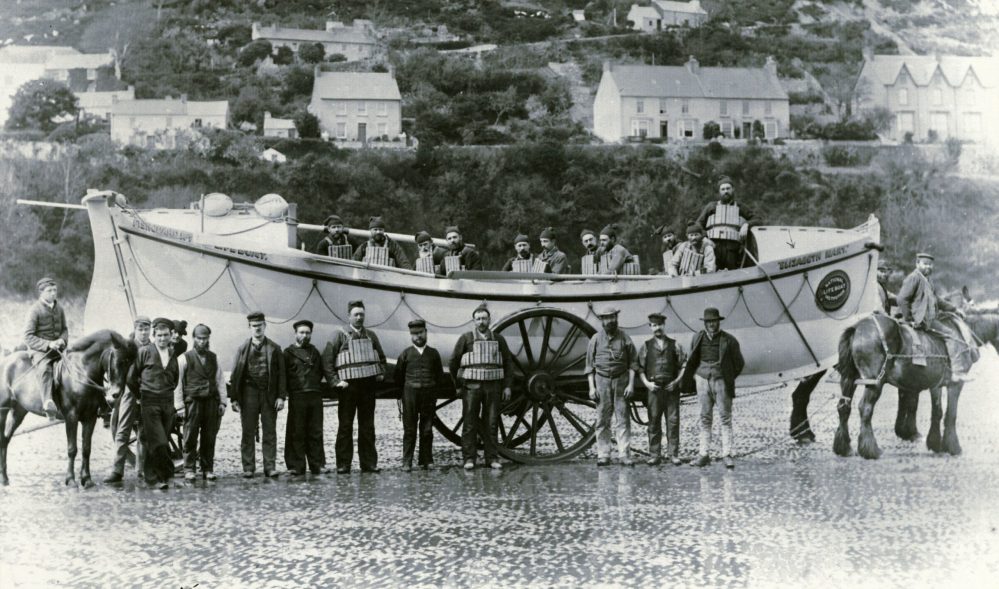
ON MONDAY, March 4, the Royal National Lifeboat Institution (RNLI) will celebrate 200 years of saving lives at sea. Fishguard RNLI Lifeboat Station is celebrating being both the oldest lifeboat station in Wales, as well as being the first Welsh station to have a female Coxswain.
On the day the charity turns 200, the RNLI is revealing its volunteer lifeboat crews and lifeguards in west Wales have saved an incredible 3,891 lives during its two centuries of lifesaving.
Since the charity was founded in 1824, its volunteer crews in west Wales have launched the lifeboats 14,872 times, saving 3,776 lives, while its lifeguards – who became part of the RNLI’s lifesaving service in 2001 – have responded to 8,865 incidents, saving 115 lives*. In total across the UK and Ireland, 146,452 lives have been saved by the RNLI – this equates to an average of two lives saved every day for 200 years.
Since 1824, the four lifeboat stations in Ceredigion have launched 4,848 times and saved 1,238 lives. In Pembrokeshire, the five stations have launched 8,563 times and saved 2,395 lives. Burry Port station in Carmarthenshire has launched 1,461 times and has saved 143 lives.
Fishguard Lifeboat Station on the far west coast of Pembrokeshire was the first lifeboat station to be established in Wales. Originally established in 1822, Fishguard’s first lifeboat was built by locals. In 1855, local inhabitants requested that the RNLI take over the station.
The station has also made RNLI history by being the first station in Wales to appoint a female Coxswain – Gemma Gill. Gemma has recently passed out as Coxswain and is thoroughly enjoying her new role.
Gemma joined the RNLI in 2001 serving as a volunteer for North Berwick and Aberystwyth RNLI before becoming a full-time staff member.
Gemma said: ‘The first person to take me to sea on a lifeboat was a woman called Rhona, and she told me “don’t let other people decide what you’re capable of,” which has always stuck with me.
‘While I believe it’s a matter of skills and experience rather than gender, I recognise the significance of this milestone.
‘We’ve come a long way from the image of a lifeboatman in his oilskins, and, as the first woman to become an RNLI coxswain in Wales, I hope to inspire other women and girls to join the lifeboat crew.’
Although not officially part of the early lifeboat crews, women have always played an active role in the work of the RNLI, from the ‘lady launchers’ who played key roles at lifeboat stations assisting in the launching and recovery of vessels, to fundraisers such as Marion Macara who helped to organise the first recorded charity street collection in Manchester in 1891.
Throughout its history, Fishguard lifeboat station has been awarded 28 medals. One gold, 18 silver and nine bronze. Today the station operates a D-class inshore lifeboat Edward Arthur Richardson as well as a Trent class Blue Peter VII.
While much has changed in 200 years, two things have remained the same – the charity’s dependence on volunteers, who give their time and commitment to save others, and the voluntary contributions from the public which have funded the service for the past two centuries.
Jo Partner, RNLI Head of Region for Wales says: ‘I am immensely grateful to everyone who is involved with the charity across Wales – our volunteers, supporters and staff. Today is a hugely significant day in our history and an occasion we should all be very proud of. I know there are lots of events being planned across Wales to mark this very special day and I hope people enjoy being part of this special piece of history.
‘I would like to take this opportunity to say thank you to all those who play a part in making the RNLI the proud organisation is it today – which really is a cause for celebration.’
RNLI Heritage Archive and Research Manager, Hayley Whiting, says: ‘The RNLI’s founder, Sir William Hillary, witnessed the treacherous nature of the sea first-hand when living on the Isle of Man and he wanted to take action. His first appeal to the nation in 1823 did not have the desired result but, thankfully, he persevered and gained the support of several philanthropic members of society, who put their names to the charity at a meeting in the City of London Tavern on 4 March 1824.
‘Twelve resolutions were passed at that meeting, the core of which still stand as part of the RNLI’s Charter 200 years later. This shows how the RNLI’s values and purpose have remained unwavering for 200 years, despite the social and economic changes and challenges of the past two centuries.
‘Hillary’s vision was ambitious and forward-thinking, and no doubt he would be extremely proud to see the charity he founded still going strong today, and to see how much it has achieved.’
The charity has a history of innovation, and adapting to challenging circumstances, such as:
Lifejackets: In 1861, Whitby lifeboat crew launched six times to rescue stricken vessels in a storm, but on their sixth launch a freak wave capsized the lifeboat and all but one of the crew were lost. The sole survivor was Henry Freeman, who survived because he was wearing a new design of cork lifejacket. After this event, the cork lifejacket became more widely adopted by lifeboat crews.
Fundraising: In 1886, 27 lifeboat crew members from Southport and St Annes lost their lives while trying to rescue the crew of the Mexico. A public appeal was launched, driven by local man Charles Macara. An 1891 appeal raised £10,000 in two weeks. On 1 October, Charles and his wife Marion organised the first Lifeboat Saturday. Bands, floats and lifeboats paraded through the streets of Manchester, followed by volunteers collecting money. More than £5,000 was taken on the day, which was the first recorded example of a charity street collection.
Lifeboats: In 1914, over 140 people were saved when the hospital steamship Rohilla was wrecked. The ship had been en route to Dunkirk to help wounded soldiers but was broken up when it ran aground on rocks near Whitby. Five lifeboats battled terrible seas to reach the ship. A motor lifeboat (the first of its kind) from Tynemouth, took the last 50 people on board. In total, 144 people were saved by the crews, who worked for over 50 hours in atrocious conditions. The motor lifeboat proved its capabilities and became more widely accepted by lifeboat crews after this event.
Wartime: When the First World War broke out, many lifeboat volunteers were called away to fight. The average age of lifeboat crews at home increased to over 50. During 1914-18, RNLI lifeboats launched 1,808 times, saving 5,332 lives. In 1939, young lifeboat volunteers were called away again to war. By the end of the Second World War, RNLI crews had saved 6,376 lives around the coasts of Britain and Ireland.
In 1940, 19 RNLI lifeboats were used to evacuate troops from Dunkirk. Two had RNLI crews onboard, while the others were crewed by the Royal Navy. The lifeboats and their stand-in crews saved thousands of lives while being shelled and bombed for days.
Throughout its bicentenary year, the charity is running events and activities to remember its important history and celebrate the modern lifesaving service it is today, while hoping to inspire generations of future lifesavers and supporters.
A Service of Thanksgiving to mark 200 years of the RNLI will take place at Westminster Abbey on 4 March 2024 at 11.30am. It will be attended by representatives from RNLI lifesaving communities around the UK and Ireland.
For further information about the RNLI’s 200th anniversary, visit RNLI.org/200.
*Statistics from RNLI Operational Data from 4 March 1824 to 31 December 2023 inclusive. A life saved shows how many of the people helped by the RNLI would have lost their life had the RNLI not been there.
Charity
Welsh opticians raise £1,600 for people experiencing homelessness

SPECSAVERS Pembroke Dock has helped raise £1,600 to support people experiencing homelessness this winter, with all funds going to The Wallich’s winter appeal.
Thirteen stores from North, South and West Wales donated £1 for every customer feedback form completed during November to help The Wallich, Wales’ largest homelessness and rough sleeping charity, continue its vital work.
Supporting more than 8,000 people experiencing or at risk of homelessness across the nation each year, The Wallich runs around 100 diverse projects across 20 local authorities to provide hope, support and solutions to end homelessness.
Funds raised by Specsavers will go directly to the Wallich’s Flexible Assistance Fund, which provides small but vital emergency grants. The grants support people at crucial turning points, helping cover essential costs such as phone credit, rent or food shops.
This initiative is a continuation of Specsavers’ wider homelessness programme, which sees over a hundred Specsavers stores and Home Visits services hold out-of-hours or pop-up clinics and invite people affected by forms of homelessness to use their services for free.
Specsavers’ North Wales regional relationship manager, Martin Lawrence, who helped organise the fundraiser, says: ‘We’re really proud to be supporting The Wallich’s winter appeal at a time when support is needed most.
‘Homelessness affects people in every community and as locally owned and run businesses, Specsavers stores are committed to raising awareness of the issue and supporting people through their toughest moments.
‘We’re excited to build on the success of this fundraiser and strengthen our partnership with The Wallich in the new year.’
Louisa Turner, head of fundraising at The Wallich, adds: ‘Winter can be an incredibly difficult time for people experiencing homelessness and this support from Specsavers will make a real difference.
‘The funds raised will help provide emergency grants at critical moments – whether that’s putting food on the table, helping someone stay connected with their loved ones or preventing someone from losing a safe place to live.
‘This kind of support creates vital turning points and helps people move towards a safer, more secure future.’
Specsavers works year-round with homelessness charities including Crisis, Vision Care and The Big Issue, to improve access to healthcare and advocate for policy change – ensuring people experiencing homelessness can receive free eye tests, glasses and hearing checks.
To find out more about Specsavers or to book an appointment at your local store, visit: https://www.specsavers.co.uk/stores.
Charity
Bluestone Foundation marks year of impact with more than £60,000 for local causes
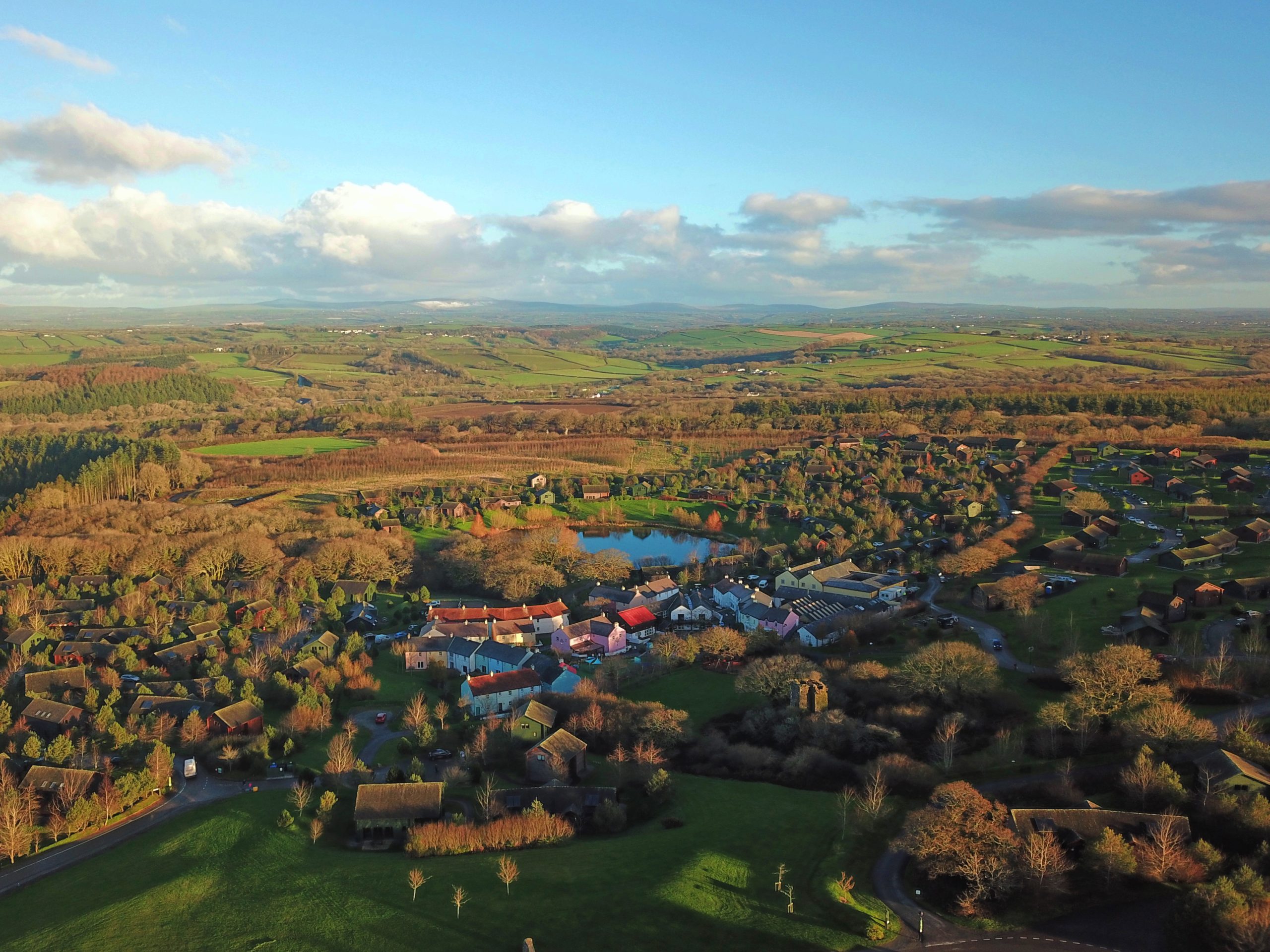
THE BLUESTONE FOUNDATION, the charitable arm of Bluestone National Park Resort, has marked a significant year of community investment after raising and distributing more than £60,000 to support projects across Pembrokeshire in 2025.
Run in partnership with the Pembrokeshire Association for Voluntary Services (PAVS), the Foundation has continued to expand its reach, backing a wide range of charities and community organisations working at the heart of the county.
During the year, the Foundation’s Community Fund delivered three rounds of grants, supporting projects focused on wellbeing, inclusion, creativity, and environmental protection.
Environmental organisations including BlueGreen Cymru, Greener Growth CIC and Sea Trust Wales received funding, alongside wellbeing and inclusion groups such as ASD Family Help, Get the Boys a Lift, No Shame Foundation and Silbers CIC.
Creative, youth and heritage organisations including Little Grebe Creative CIC, Pater Hall Community Trust, Milford Haven Community Society, Urdd Gobaith Cymru and VC Gallery also benefited.
In total, £32,968.57 was awarded through the Community Fund in 2025.
Fundraising events held at the Blue Lagoon Water Park generated a further £19,500 in unrestricted income. Under the Foundation’s funding model, 75 per cent of that money is passed directly to charities, with the remaining 25 per cent placed into a flexible fund to support causes that fall outside the Community Fund’s criteria.
Flexible funding totalling £4,500 was used this year to support initiatives including Sport Pembrokeshire’s Fit and Fed project, refurbishment work at Martletwy Young Farmers Club hall, Bloomfield Bus and Green Dragon Bus services, and Nacro’s Christmas appeal, providing food, warm clothing and essential items to people in crisis.
The Foundation also supported the PATCH Christmas Toy Appeal, encouraging staff and visitors at Bluestone to donate gifts for families referred to the charity during the festive period.
In addition, more than one hundred fundraising events across the region were supported through prize donations from the Foundation, including over 200 family passes to the Blue Lagoon Water Park, 32 overnight spa breaks and nine Bluestone holiday breaks.
Marten Lewis, Chair of the Bluestone Foundation said: “This year’s achievements reflect the heart of who we are at Bluestone. The Foundation exists to uplift the people and places that make Pembrokeshire such a special community.
“The impact of our partners, grant recipients and fundraising efforts in 2025 shows what is possible when we work together, and we are proud to see the difference it continues to make across the county.”
Looking ahead to 2026, the Foundation has confirmed continued support for Sport Pembrokeshire’s Fit and Fed project and will act as gold sponsor of the DPJ Foundation’s Macchu Picchu trek.
Five further Blue Lagoon fundraising events are already scheduled between February and August, supporting Local Cadets, Belles Story, Martletwy YFC Hall, Blue Horizons Coastal Adventure and Friends of Portfield School.
Tickets for those events are available via the Bluestone Foundation’s Eventbrite page.
For more information about the Bluestone Foundation, visit the Bluestone website.
Charity
Communities across Pembrokeshire unite in memory of Sally Allen
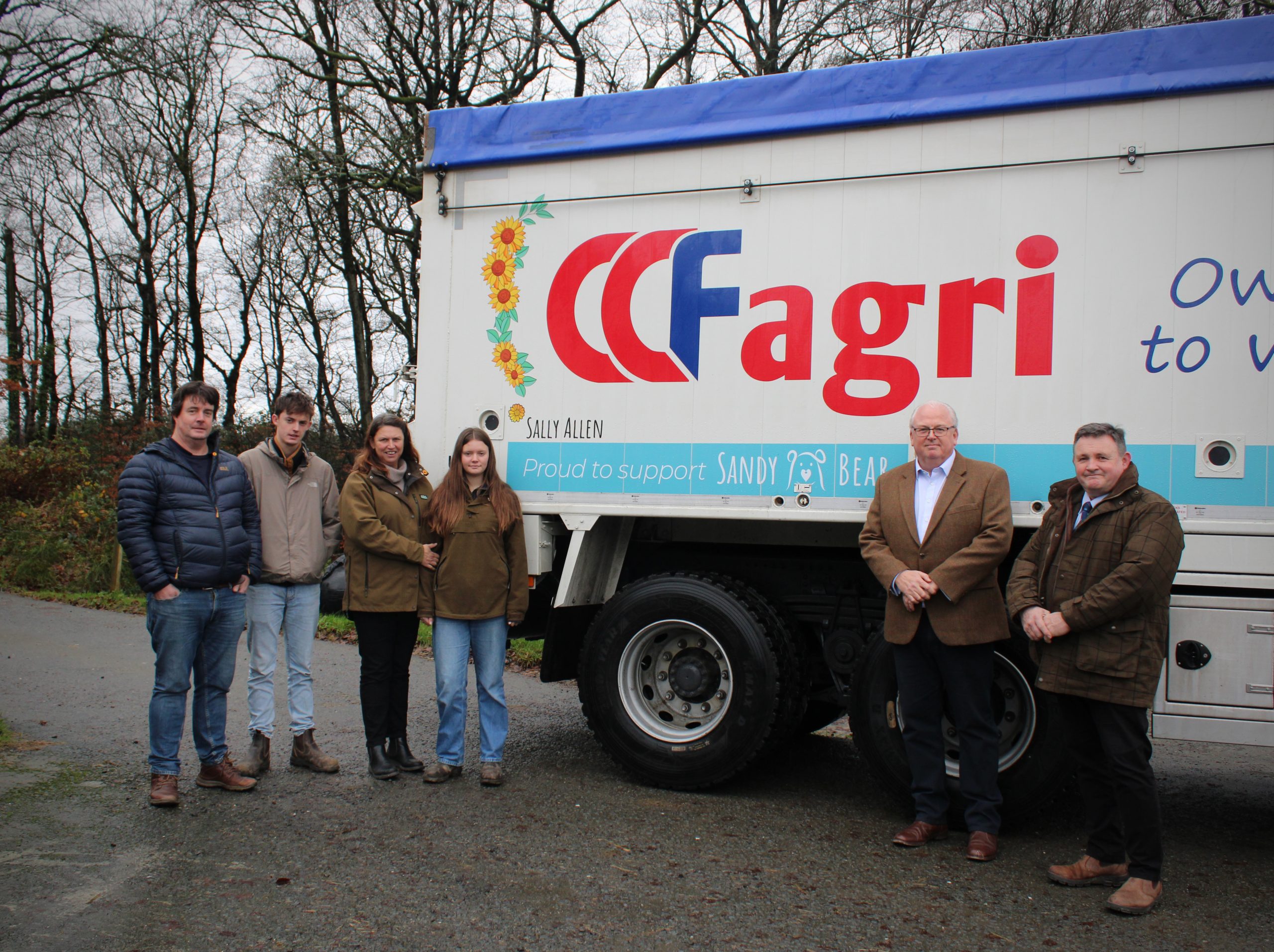
THE TRAGIC loss of Sally Allen in 2025 sent shockwaves through communities across Pembrokeshire and beyond. Deeply loved and widely respected, Sally was an integral part of the agricultural and equestrian world. Her sudden passing left an immeasurable sense of loss for her family, friends, and the many organisations and communities she was part of.
In the days and weeks following the accident, people from across the county came together in an extraordinary show of compassion, solidarity and remembrance. Sandy Bear Children’s Bereavement Charity was on hand to offer guidance and support to communities affected by the tragedy, helping individuals and families navigate the early and often overwhelming stages of grief.

Support in Sally’s memory has been widespread, with particular strength coming from the agricultural and equestrian sectors that meant so much to her. Young Farmers Clubs across Pembrokeshire organised fundraising evenings and gatherings, creating spaces for people to come together, share memories, and acknowledge the profound loss felt by so many.
On Monday 15 December, a deeply moving moment of remembrance took place as Sally’s family came together with David Evans, Chief Executive Officer of Clynderwen and Cardiganshire Farmers Ltd (CCF), along with further representatives from CCF and Sandy Bear Children’s Bereavement Charity. The occasion marked the launch of a specially commissioned design on one of CCF’s lorries.
The vehicle, N12 CCF, now proudly carries sunflowers – a flower Sally loved – alongside her name, celebrating her life while also featuring the Sandy Bear logo. This thoughtful tribute was warmly received by the Allen family and ensures that Sally’s memory, kindness and impact will continue to be carried far and wide.
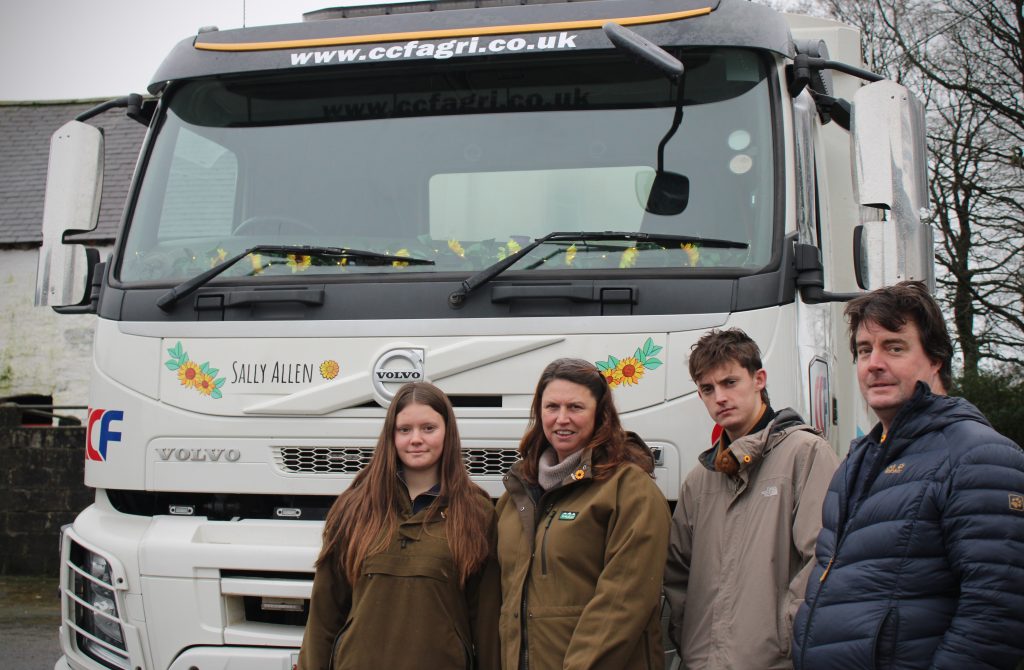
CCF is deeply rooted in the landscapes and communities Sally cared about. At the launch, Mr Evans announced that CCF will make a donation to Sandy Bear aligned with the miles travelled by N12 CCF throughout January, transforming everyday journeys into a lasting legacy of support.
In addition, a JustGiving page will remain open until the end of January, allowing individuals and organisations to continue honouring Sally’s memory by supporting Sandy Bear alongside the CCF fundraiser.
Sandy Bear Children’s Bereavement Charity supports children and young people across Wales who are grieving the death of someone important to them. Being present at times of profound loss, and helping communities process grief with care and compassion, is at the heart of the charity’s work.
Sally Allen’s life touched many. The response to her passing has shown not only the depth of love felt for her, but the strength of communities when they come together in kindness. Through these acts of remembrance and generosity, her legacy will continue to make a difference to others during their darkest moments.
-

 Crime2 days ago
Crime2 days agoMilford Haven man jailed after drunken attack on partner and police officers
-
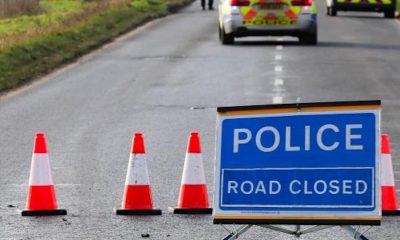
 News5 days ago
News5 days agoDyfed-Powys Police launch major investigation after triple fatal crash
-

 Crime2 days ago
Crime2 days agoTeenager charged following rape allegation at Saundersfoot nightclub
-

 Crime3 days ago
Crime3 days agoMan charged with months of coercive control and assaults
-

 Crime4 days ago
Crime4 days agoMan sent to Crown Court over historic indecent assault allegations
-

 Crime6 days ago
Crime6 days agoMan spared jail after baseball bat incident in Milford Haven
-
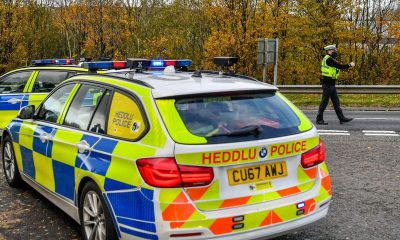
 Crime4 days ago
Crime4 days agoMilford Haven man admits multiple offences after A477 incident
-

 Crime3 days ago
Crime3 days agoWoman ‘terrified in own home’ after ex breaches court order







